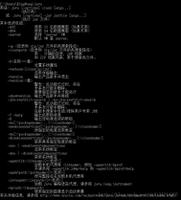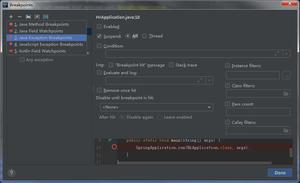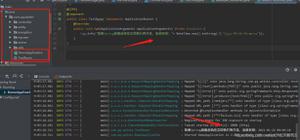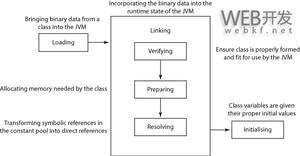react hook class组件useRef特性
前言
react hook是继16.6的Suspense、lazy、memo后的又一巨大的令人兴奋的特性。然后有各种文章说了hook的优缺点,其中缺点包括:没有直接替代getSnapshotBeforeUpdate、componentDidUpdate生命周期的hook、不能像class组件那样写this、函数太大。这只是表面的现象,只要稍微思考一下,hook其实是无所不能的,我甚至相信未来挑不出hook的毛病来。今天手把手带大家过一遍如何实现class组件特性。
基本用法可见官网,阅读本文需要先了解useState、useEffect、useRef、useLayoutEffect的使用方法。本文核心hook——useRef,本文也算是一篇useRef的应用文章。当你知道核心是基于useRef的时候,或许已经想到实现办法了,很好,我们心有灵犀 「握个手」
useRef
useRef传入一个参数initValue,并创建一个对象{ current: initValue }给函数组件使用,在整个生命周期中该对象保持不变。所以,听到它名字叫做useRef的时候,很自然就想到它就是用来做元素的ref的:
const divRef = useRef();return <divref={divRef}>;
最基本的使用方法,接着想进行dom操作,那就这样玩:
if (divRef.current) {divRef.current.addEventListener(...);
}
函数组件的执行,整个函数体所有的必然躲不掉重新执行,那么如果希望有一个不重新走一遍的变量,我们通常会把它放函数组件外面去:
let isMount = false;functionC(){
useEffect(() => { isMount= true; return () => { isMount= false; } }, []);
return <div />
}
这就是一个判断组件有没有挂载到页面的实现方法,如果我们用useRef,显然优雅很多了,而且是不是有点this的感觉
functionC(){const mount = useRef({}).current;
useEffect(() => { mount.isMount= true; return () => { mount.isMount= false; } }, []);
return <div />
}
ok,现在假的this要原形毕露了:
export default () => {const _this = useRef({
state: { a: 1, b: 0 },
}).current;
return (
<div>
a: {_this.state.a} / b : {_this.state.b}
</div>
)
}
state更新相关的逻辑实现
useState就相当于hook版本的setState,const [state, setState] = useState(initState);,state利用了函数组件重新执行,从闭包读取函数记忆的结果。调用hook的setState,则会更新state的值然后重新执行一遍整个函数组件。此处再次感叹一下,hook真的没什么黑魔法,少一点套路多一点真诚。
比如有一个这样子的组件:
function T(){const [count, setCount] = useState(0);
return <span onClick={() => setCount(count + 1)}>{count}</span>
}
第一次执行函数组件,最后渲染就相当于:
functionT(){const count = 0
return <span>{count}</span>
}
点击一下,count+1,也就是相当于执行了一个这样子的函数组件:
functionT(){const count = 1
return <span>{count}</span>
}
所以,真没有什么黑魔法,就是读前一个值然后+1展示而已。好了,回到正题,函数组件的更新就是useState,那强制更新呢?如何实现一个forceUpdate?其实也很简单,dispatcher(useState返回值第二个元素)传入一个函数,类似于class组件的setState传入一个函数一样,可以拿到当前的state值:
const useForceUpdate = () => {const forceUpdate = useState(0)[1];
return () => forceUpdate(x => x + 1);
}
exportdefault () => {
const forceUpdate = useForceUpdate(); // 先定义好,后面想用就用
// ...
return (
<div />
)
}
我们已经知道了如何模拟this和state初始化了,那我们可以实现一个类似class组件的setState了:给ref里面的属性赋值,再forceUpdate。
本文只是希望全部收拢在useRef,然后修改状态的方法纯粹一点,当然可以用useState对着一个个state值进行修改
export default () => {const forceUpdate = useForceUpdate();
const _this = useRef({
state: { a: 1, b: 0 },
setState(f) {
console.log(this.state)
this.state = {
...this.state,
...(typeof f === 'function' ? f(this.state) : f) // 两种方法都考虑一下
};
forceUpdate();
},
forceUpdate,
}).current;
return (
<div>
a: {_this.state.a} / b : {_this.state.b}
<button onClick={() => { _this.setState({ a: _this.state.a + 1 }) }}>a传state</button>
<button onClick={() => { _this.setState(({ b }) => ({ b: b + 2 })) }}>b传函数</button>
</div>
);
}
到此,我们已经实现了class组件的this,setState,forceUpdate了
didmount、didupdate、willunmount的实现
其实我上一篇文章已经实现过,这里再糅合到ref里面重新实现一遍。还是一样的方法,基于两个useEffect实现三个生命周期:
export default () => {const forceUpdate = useForceUpdate();
const isMounted = useRef(); // 挂载标记
const _this = useRef({
state: { a: 1, b: 0 },
setState(f) {
console.log(this.state)
this.state = {
...this.state,
...(typeof f === 'function' ? f(this.state) : f) // 两种方法都考虑一下
};
forceUpdate();
},
forceUpdate,
componentDidMount() {
console.log('didmount')
},
componentDidUpdate() {
console.warn('didupdate');
},
componentWillUnMount() {
console.log('unmount')
},
}).current;
useEffect(() => {
_this.componentDidMount();
return _this.componentWillUnMount;
}, [_this]);
useEffect(() => {
if (!isMounted.current) {
isMounted.current = true;
} else {
_this.componentDidUpdate();
}
})
return (
<div>
a: {_this.state.a} / b : {_this.state.b}
<button onClick={() => { _this.setState({ a: _this.state.a + 1 }) }}>a传state</button>
<button onClick={() => { _this.setState(({ b }) => ({ b: b + 2 })) }}>b传函数</button>
</div>
)
}
记录上一次状态
有人可能也注意到了,上面的componentDidUpdate是没有传入上一次props和state的。是的,getDerivedStateFromProps也要上一个state的。所以我们还需要一个ref存上一个状态:
export default (props) => {const forceUpdate = useForceUpdate();
const isMounted = useRef();
const magic = useRef({ prevProps: props, prevState: {}, snapshot: null }).current;
magic.currentProps = props; // 先把当前父组件传入的props记录一下
const _this = useRef({
state: { a: 1, b: 0 },
setState(f) {
console.log(this.state)
this.state = {
...this.state,
...(typeof f === 'function' ? f(this.state) : f)
};
forceUpdate();
},
componentDidMount() {
console.log('didmount')
},
getDerivedStateFromProps(newProps, currentState) {
// 先放这里,反正等下要实现的
},
componentDidUpdate(prevProps, prevState, snapshot) {
console.warn('didupdate');
console.table([
{ k: '上一个props', v: JSON.stringify(prevProps) },
{ k: 'this.props', v: JSON.stringify(magic.currentProps) },
{ k: '上一个state', v: JSON.stringify(prevState) },
{ k: 'this.state', v: JSON.stringify(_this.state) },
])
},
componentWillUnMount() {
console.log('unmount')
}
}).current;
useEffect(() => {
_this.componentDidMount();
// 后面都是赋值操作,防止同一个引用对象,实际上应该深拷贝的。这里为了方便,但至少要浅拷
magic.prevProps = { ...props }; // 记录当前的,作为上一个props给下一次用
magic.prevState = { ..._this.state }; // 同理
return _this.componentWillUnMount;
}, [_this, magic]);
useEffect(() => {
if (!isMounted.current) {
isMounted.current = true;
} else {
// 这里就拿到了上一个props、state了,snapshot也先留个空位给他吧
_this.componentDidUpdate(magic.prevProps, magic.prevState, magic.snapshot || null);
// 拿完就继续重复操作,给下一次用
magic.prevProps = { ...props };
magic.prevState = { ..._this.state };
}
})
return (
<div>
props: {props.p}/
a: {_this.state.a} / b : {_this.state.b}
<button onClick={() => { _this.setState({ a: _this.state.a + 1 }) }}>a传state</button>
<button onClick={() => { _this.setState(({ b }) => ({ b: b + 2 })) }}>b传函数</button>
</div>
);
}
这下,可以去控制台做一些操作state和改变props的操作了,并看下打印的结果
getDerivedStateFromProps
这个函数的原意就是希望props可以作为初始化state或者在渲染之前修改state,那么根据它的意图,很容易就可以实现这个生命周期,我这里getDerivedStateFromProps还可以用假this哦。其实这个生命周期应该是最容易实现和想出来的了:
// 基于前面的组件直接加上这段代码const newState = _this.getDerivedStateFromProps(props, magic.prevState);
if (newState) {
_this.state = { ..._this.state, ...newState }; // 这里不要再更新组件了,直接改state就收了
}
getSnapshotBeforeUpdate
到了一个hook不能直接替代的生命周期了。这里再看一下useLayoutEffect和useEffect执行的时机对比:

注意到,下一个useLayoutEffect执行之前,先执行上一个useLayoutEffect的clean up函数,而且都是同步,可以做到近似模拟willupdate或者getSnapshotBeforeUpdate了
// 再增加一段代码useLayoutEffect(() => {
return () => {
// 上一个props、state也传进来,然后magic.snapshot 前面已经传入了componentDidUpdate
magic.snapshot = _this.getSnapshotBeforeUpdate(magic.prevProps, magic.prevState);
}
})
componentDidCatch
另一个不能用hook直接替代的生命周期,说到错误,这个生命周期也是捕捉函数render执行的时候的错误。那些编译不过的,非函数渲染时候报的错,它无法捕获的哦。基于这个前提,我们还是基于try-catch大法实现一波:
// 对最后的return 修改,这里还可以个性化一下fallback ui呢try {
return (
<div>
props: {props.p}/
a: {_this.state.a} / b : {_this.state.b}
<button onClick={() => { _this.setState({ a: _this.state.a + 1 }) }}>a传state</button>
<button onClick={() => { _this.setState(({ b }) => ({ b: b + 2 })) }}>b传函数</button>
</div>
)
} catch (e) {
_this.componentDidCatch(e)
return <div>some err accured</div>;
}
以上是 react hook class组件useRef特性 的全部内容, 来源链接: utcz.com/a/115884.html







